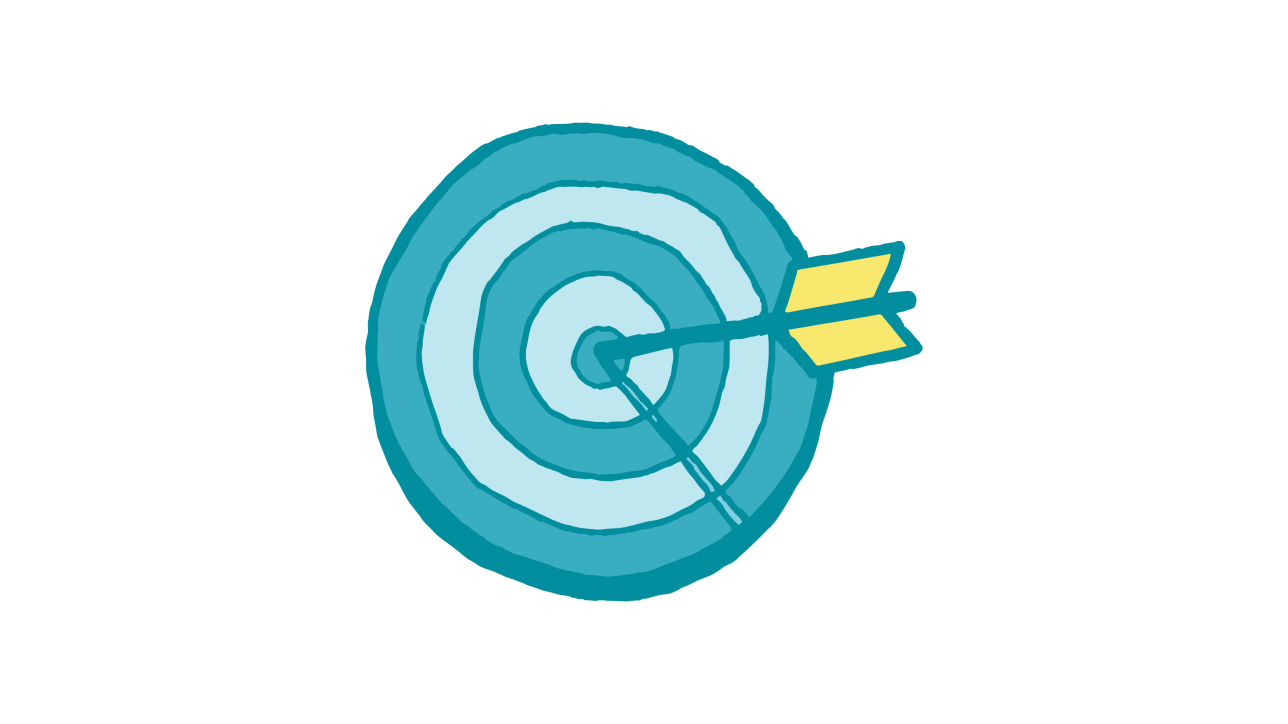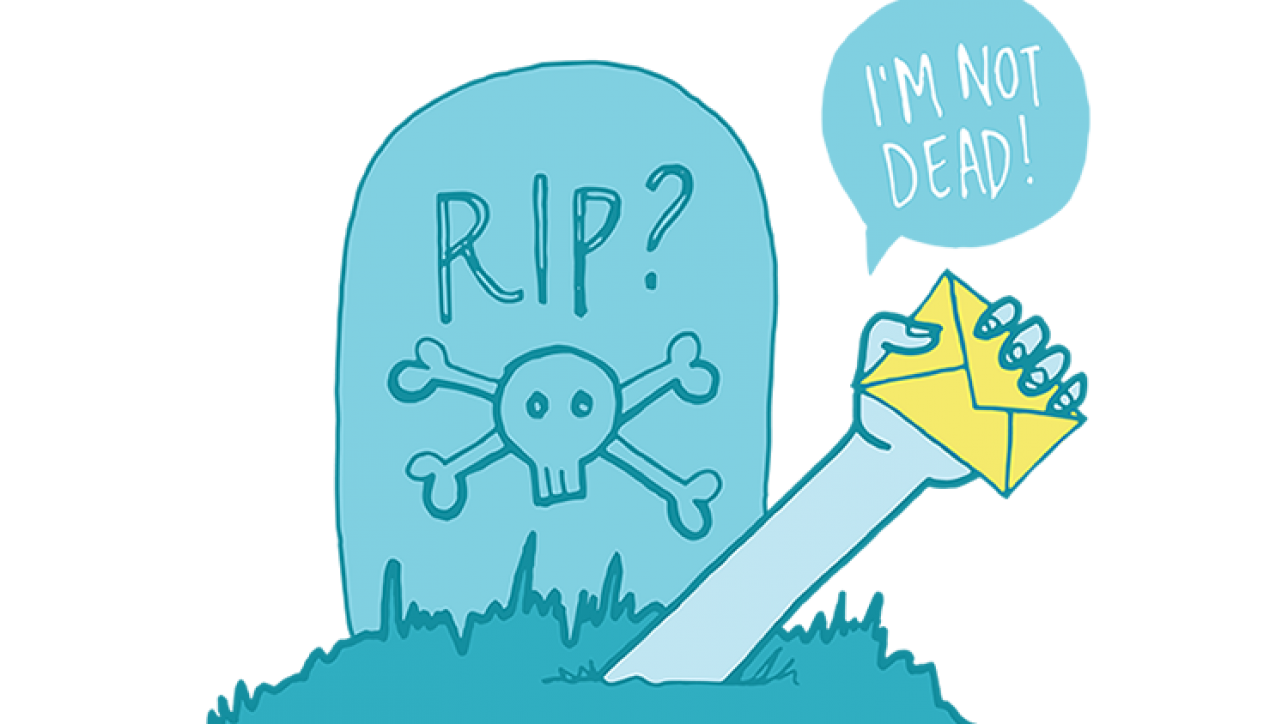Every website should have an ideal user in mind whether that user is a consumer who will purchase a product or just an avid fan who will read and share your information. The most successful websites have not only embraced this concept, they know that marketing, writing, designing, etc., really centers around that target user. The question then becomes: How do you define that persona? Read more
How To Get Social with Buyer Personas
What’s your social media style? What’s your favorite social media topic? Do your style and topic preferences change depending on whether you’re perusing social media for personal versus business purposes?
Are you most interested in “How To” articles (like this one), or do you prefer step-by-step tips and tricks? Do you like long, meaty articles, or do you like bite-sized posts that take just a minute or two to read?
Do you obsess over the appropriate number of times to post each day? And, do you schedule your posts religiously, or do you just toss something out there when the mood strikes you?
How about this: What are your favorite blogs to read? Where do you go for information? Do you sign up for RSS feeds, or do you count on various social media feeds to bring you the information posted by those who run your favorite websites?
When and how do you prefer to get the information that interests you most? Do you sit down in front of your computer with a cup of coffee and stroll through your social media streams each morning, or do you power through random social snippets on your smart phone in between meetings? Do you always read the same sources, or are you on the hunt for new ones more often than not?
That’s an awful lot of questions, isn’t it? And yet, with all those questions we’ve barely begun to find out who you are.
There’s a story behind every buyer, and brands need to know the stories behind their customers and communities so they can be a better social resource. It’s all a part of the process of defining a brand’s buyer personas.
Defining buyer personas isn’t just a matter of coming up with a range of customer profiles or pinpointing target markets. It actually has more to do with determining your key customers’ behaviors.
Once you’ve determined your customers’ behaviors, you have to figure out how to appeal to them. You also need to figure out where they are, when they’re there, how they’re getting there, what they need when they’re there, and what you can do to be there when they need you most.
You also need to determine where there is. Is it on Facebook or Twitter, or both? Is it on your blog or in your email messaging? Are the images you’re posting on Pinterest or Instagram getting people into your store to buy your products? Once you’re where your customers are, you have to focus on providing the solutions they need, when they need them.
Having a deep understanding of who, what, why, when and where your customers are will help you tailor your content more specifically. It’ll also guide your marketing strategies, your style of communications, timing and frequency, and brand messaging. Beyond social media, accurate buyer personas can even help drive your operations, product distributions, sales and services.
Buyer personas are more than just demographics. They’re not something you can figure out just by looking at your dashboard. You have to ask very directed questions (without appearing pushy, of course). If you’re doing it right, each answer will lead you to more information about your customers.
Try asking questions via social media. Have fun with it and vary the way you inquire. You might not get a lot of responses at first because people are often unwilling to be one of the first to voice their opinions in an information-gathering scenario. Realize that people often peruse your social media posts without acting on them – at least not every time. But they’re there. They see your messaging, and the more they see it, the more comfortable they’ll become with it. The more comfortable they become with it, the more they’ll act on it. Ultimately, the more they act on it, the more they’ll tell you what they want. And finding out what your customers want is buyer persona gold.
Looking for creative and engaging ways to define your buyer personas? We can help!
How to Write Smarter Content Using Buyer Personas
How can you use buyer personas to create smarter content? We’re so glad you asked! This post aims to answer that very question. But before we get started, what do we mean by “buyer persona” and “smarter content”?
Let’s start with buyer personas. HubSpot offers a useful definition: “” Buyer personas are specific and detailed portraits or profiles of people within your target audience that tell the full story about how and why a buyer makes a buying decision.
Smarter content is content that works harder because it’s directed specifically to your target audience. You can’t speak to everyone. And why would you want to? “Everyone” isn’t your potential customer. (If you disagree, please read this and this.) Before you can create this smart content, you need to identify who you’re speaking to, and your buyer personas give you the info you need.
Don’t have complete buyer personas? You can start creating smarter content today by using what you do know about your customers from your interactions thus far and then tweaking later as your buyer personas come into better focus. (You’ll be tweaking later even if you do have thorough buyer personas since they’re dynamic, not static.) Don’t wait until you have the perfect buyer personas to start creating content. Start with what you know and refine your approach as you go based on the data you track. More on that later.
Now a few helpful tips to take your content from “It’s all Greek to me” to “You’re speaking my language”:
Content
What’s the content of your content? That is, what is your content going to be about? Often the most successful content provides a solution to a problem that your customers are facing. Your buyer personas are key here because they give you major clues about what those problems are. What do they need help with? What do they care about? What are their values? This info provides you with a wealth of topics to start creating content about.
As you plan subjects for your content, remember ‘s four principles of content marketing: Listen, Communicate, Teach, Help. If you’re doing these four things as they relate to your buyer personas, you’re well on your way to producing content that speaks to your target audience.
Wording
Once you know who your customers are, you can begin to identify what language they speak in order to create the content that speaks to them. We’re not talking literally here but on the level of diction. The word “diction” comes from Latin dictio(n-), from dicere meaning ‘to say.’ When we’re talking about diction, we’re talking about what people say. Are you writing your content with the words that your buyer personas speak? If not, start now.
Put another way (like by way of the dictionary), diction refers to “the choice and use of words and phrases in speech or writing.” If you’re a B2B content marketer, the language used by your buyer personas can be considerably different than that used by the buyer personas of B2C content marketers. What type of language do your buyer personas use? Do they use jargon related to an industry? Is their diction more conversational than formal? What words do they use to describe your product?
Form
Smarter content marketing isn’t only about what you say and how you say it, but also in what form your content takes. Do your customers prefer long-form content such as white papers and e-Books? Or will you fill their needs better by creating videos and other visual content made available to them via social media? Your buyer personas are key to answering these questions accurately.
(Lucky for you, we recently wrote a useful little post about how to create great visual content, which you can use as a resource for creating your own. In fact, check out our archives for lots of great tips on producing and distributing different types on content.)
Context
That’s right. You can find out where to put your content with your buyer personas, too. Where do your customers prefer to consume their content? Social media? Email newsletters? Tweets? Focus your content marketing strategy on the channels your buyer personas prefer.
Track It & Tweak It
Once you’ve created content based on the above tips, put it out there and track how your customers engage with it. Then, use this data to adjust your buyer personas and keep improving your content.
Understanding your buyers is a critical first step toward developing a content marketing strategy. Buyer personas give you a map toward creating valuable content—content that converts, content that’s relevant enough to be shared again and again. Keep your customer on top of mind in every piece of content you produce, from blog posts to status updates to tweets to videos to images.
Check back with us on Wednesday to read about using buyer personas in email segmentation and personalization. And get in touch with Filament to learn more ways you can use buyer personas to create an effective content marketing plan.
How to Craft Great Visual Content
It’s common knowledge by now that visual content gets you more engagement. You’ve seen the stats, and you know from your own experience that visual content grabs attention and garners lots of shares. Since more and more people are grabbing pieces of the visual content pie, you might need to step up your visual content game to keep your fans and followers, readers and potential customers engaged.
Firstly, what is visual content? It’s not just images and videos. And it’s not just on social media. Visual content can be put to effective use on multiple channels. We want to be sure that we’re looking at the complete picture when thinking about—and planning—a visual content marketing strategy.
Some major types of visual content:
- Infographics
- Memes
- Images
- Videos
- Comics
Several visual content channels:
- Website
- Blog
- Social media
- Mobile
Now that we’re seeing the big picture, here are a few other things to keep within your sights as you’re creating engaging visual content.
1. Remember your audience.
Make sure your visual content is relevant to your target audience. Pick topics they want to know more about or speak to their pain points in humorous ways. What do they care about? What problems do they need solving? Keep your content relevant—and that means timely, like in this example from Home Depot on Vine shared 3 days before the Super Bowl XLIX:
2. Match your brand.
Be consistent with your colors, font style and other design elements in every piece of visual content you put out there. If you check out Filament’s website and blog, you’ll see that every single image uses the same color scheme and font style.
3. Make the best use of each channel.
Different channels require different types of visual content. On Twitter, for example, images get more retweets than videos. Look at what works for other brands and look at your own analytics too to see which type of visual content works best on each channel for your specific audience. Maybe you’re seeing a lot of clicks when you use video in email. Or maybe you should keep your videos on Vine.
N.B. Each social media platform has different dimension requirements for digital media. Know what they are and follow them to get the best results and ensure your visual content looks great across platforms.
4. Craft compelling copy.
Whether it’s the copy in your infographic, social media posts, a caption for an image or the copy accompanying a video post, you want to be sure your copy is always on brand, that it not only informs about the visual content but also adds a little something more, as in this tweet from Grammarly:
What are a few of your favorite examples of visual content? What brands do you think do visual content well? Which type of visual content works well for your target audience on each platform? Share your tips and tricks with the Filament community below.
Still feeling unsure of how to begin? We can help develop a visual content strategy for your business to help you get more engagement. Filament is all about illuminating your business online, and visual content is a smart way to do it.
From creepy to compelling: How to keep email personalization on point
Creating customer profiles and focusing on email personalization has been shown to increase lead-to-customer conversion rates and customer engagement. Experian’s 2013 email market study reported that personalized emails generate up to six times the revenue of non-personalized emails. Plus, 74% of marketers say that targeted personalization increases customer engagement, according to a recent Econsultancy report. All the same, many marketers are concerned about going overboard and appearing creepy. Are their concerns reasonable?
James Green from Magnetic put it best in an interview with HubSpot:
“Today the difference between ‘creepy’ and ‘not creepy’ is if an ad is so personalized it can only be for you. For example, an ad telling you to ‘buy diapers now because you’re giving birth in two weeks’ is too much, but an ad for diapers isn’t. Drawing the line between each is an art, not a science, and marketers must be always be considerate of their audience.”
If you’re creeped out at the idea of profiling and personalizing, you might need to change your mindset from thinking of these strategies as invasive to realizing that they’re about providing a better level of service for your customers. It’s not about tricking them into something but providing what they want when they want it. Customer profiles and personalized emails can be key parts of a successful email campaign—as long as you do it right. Here are a few ways to keep them from crossing the line into big-brother territory.
Know your audience.
What level of personalization is your target audience comfortable with? Once you know that, you can keep it at a level where they won’t lose trust in your brand. Use personalization where they expect it—in emails, for example, when they’ve opted in, given their name and possibly shared some areas of interest.
Add value.
Creating customer profiles are an effective way to add value to your audience. Click behavior and in-email surveys can provide a lot of info about your customers. Use that info to provide content that your customers want. Plus, don’t forget about using multichannel information—such as from social media—to craft more relevant content and create effective strategies for engaging your audience. This kind of data goes a long way toward providing the kind of content that gets more clicks and conversions.
Be accurate.
Sometimes the data gets it wrong. One sure way to alienate your subscribers is to misspell their name or to address them by the wrong name altogether. Be sure to watch out for the following:
- Name misspellings
- Gender pronouns
- Titles (Mrs. vs. Ms.)
- Fake names
Have you received a personalized email that was just too personalized? Share it below along with smart ways you’ve discovered to create accurate customer profiles and keep personalized emails doing what they’re supposed to do.
Get in touch with Filament to find out more about how to create an email marketing strategy that includes personalization without the creep factor.
SEO, Segmentation, Keywords and Meta Descriptions
Using SEO, Keywords, Meta Descriptions and Optimized Content to get conversions is key in creating a successful website. You can optimize all you want and have everyone in the world clicking on your result and get none of them following through if you don’t have a thorough approach and plan. For these purposes, “conversion” refers to whether you’re converting viewers to purchasers or loyal blog readers or anything in between.
The first step is and should always be to determine what your end goal is and who you’re targeting. You may want everybody to buy your product. But ask yourself this: Who is everybody?
We bet you can narrow that down a bit, and that’s where market segmentation begins. Start thinking about your audience and who you want to reach. One of the best ways to think of this is to imagine geographic segmentation: people in your city, state, country, etc. Start your conversion marketing by segmenting your audience and creating separate keywords, pages and content to appeal to these segments.
While meta descriptions aren’t considered in your search engine ranking, they’re still very important and can be quite valuable. The meta description is the short paragraph that describes your webpage in search results. It is an introduction to your website – the all-important first impression that means so much. Do you see why it’s so important to include meta descriptions your online strategy? Now bring segmentation into the equation and create a page for your local audience and your worldwide audience. Then you can create the keywords, content and meta description for each based on your research.
Finally, we need to consider the content we’re pushing out to the web audience. Use market segmentation research and buying habit information to promote your agenda in a way that appeals to your audience. Having professional writers create your content is one sure way to get the best results. Remember: everyone in the world can visit your site but if they’re not converting, their visits are virtually worthless to you. Lead your visitors to the end result you want with content that is tailored to them.
Filament specializes in writing web content that uses your brand’s voice to speak to your audience and get them to not only give you that return on investment you want, but to convert to life-long fans of your website. Contact Filament to see how we can help your website succeed.
Social Media Quality vs Quantity: What’s Your “Social Q”?
Facebook, it seems, is always shaking things up. Just when we finally get used to their last round of changes, they go and “update” something else. We dislike how they decide what we get to see and what we don’t in our feeds, and just when we think we’ve outsmarted them, we realize they’ve once again beaten us to the punch.
Recently, Facebook struck fear in the hearts of page owners everywhere with the announcement that they were going to “make page likes more meaningful… [by] removing inactive Facebook accounts.”
Many page owners tried to inform their communities of the impending changes in hopes of preserving the numbers of fans that Liked the page.
5 SEO Myths That May Be Hurting Your Web Business
SEO, or Search Engine Optimization, is an ever changing field and always has been. Lately the changes have been happening more rapidly and that tends to leave behind some old tactics – both bad and good – that no longer have the impact they once potentially had. We’d like to give you a heads up on some of those SEO myths which aren’t doing you any good.
Buying a Rank
This has been around as long as SEO has – just like thieves have always been around commerce. It’s simply not true. Google does not sell rankings and any company that tells you that they do is flat out stealing from you. Read more
Is Email Marketing Dead? Not If You Breathe New Life Into Your Email Campaigns!
Just because you’re not seeing the returns on email that you’d like to, doesn’t mean that email marketing is dead. Is it harder to grab your reader’s attention? Yes. But all signs point to email still being a key method of maintaining relevant conversations with your customers. If those conversations aren’t happening for you or you’re not seeing the conversion rates you’d like, it’s time to do some email CPR.
Not Dead Yet
First and foremost, email continues to drive sales. According to the Salesforce Marketing Cloud 2015 State of Marketing Report, 73% of marketers agree that email marketing is core to their business. 60% claim that it’s an essential enabler of products and services, versus 42% of marketers in 2014. And 20% say that email is directly linked to their business’ primary revenue source.
Add to this the fact that way more people are active on email than are active of any other channel, including Facebook and Twitter combined. According to the Radicati Group, a leading technology market research firm, there were 4.1 billion email accounts worldwide as of 2014, and that’s supposed to grow to 5.2 by the end of 2018. The total number of email users is increasing too, from over 2.5 billion in 2014 to 2.8 billion in 2014. Compare that to Facebook’s 1.35 billion active users (Statista) and Twitter’s 288 million users (Statista). Not too shabby, Email!
Beyond statistics, email is also important because it’s one of the few channels that still gives you a large degree of control over your reach and your brand. You have control over your own list and over, by and large, who sees your emails. There’s no organic drop. On top of that, you have absolute control over the creative, over the look and feel of your email and how your brand is portrayed.
In addition, email offers a unique opportunity to provide customized experiences for your clients. You can personalize emails to make them feel like one-of-a-kind conversations. And you can direct them to very specific niches within your email list with segmentation.
Email CPR
Now that we’re on the same page about email marketing’s value, let’s look at where the real problem might lie. That’s right. With your emails.
Gone are the days of email blasts with their one-way flow of untargeted information. The digital environment has changed, and your email needs to change with it.
Here are a few ways to breathe new life into your email marketing:
• Keep your content relevant and engaging. Data from Marketing Cloud shows that marketers rank the 3 most effective aspects of an email as email content and design (66%), templates (59%), and quality control (58%). You want to make sure your emails look like they were written by a human being, that they’re timely and that they include useful information for the specific audience for that specific email.
• Use data smarter. Use it to personalize and segment your emails more. This goes with our point above, since you’ll be able to write better content that speaks to your subscribers individually, not as a demographic. Personalizing and getting the right emails to the right people via segmentation is an important way to ensure that you’re creating conversations that respond to your customers’ needs.
• Go responsive. More than half of all emails are now opened on mobile devices. In order for your content to do its work, it’s got to be able to be read on a mobile device.
• Deliver on what you promise. That goes from your hook and getting people to sign up for emails, on down to your subject lines and preheaders that communicate what’s in the body of each and every email.
Check out a few of our other posts on email marketing for more great ways to enliven your email content:
Get to the Point, Part 1: Subject Lines & Preheaders
Get to the Point, Part 2: Email Body
5 Be’s for Subject Lines that Rock
How to Write the Perfect Preheader
While email might not be as valuable as it was when there were fewer channels to contend with, it’s still well worth your business’s time and attention.
Is your email pulse still slowing? Get in touch and let us help you strategize, design, write and test compelling email campaigns that’ll get your email marketing on the way to happy and healthy.
So Fresh and Clean: Updating Your Website Content
Your website is your face on the Internet. It’s often the first way potential clients come in contact with your business and with what it has to offer. You want to (1) make sure it’s easy for customers to find you, and (2) provide as much value on your site as possible with the goal of clinching conversions. Performing regular website content audits is the best way to ensure that your website is accomplishing those goals. In this post, we’ll cover how maintaining fresh content increases rankings and customer engagement as well as how to spruce up your website, from creating new content to reconnecting with existing content.
Why say goodbye to stale content
Search engine rankings
Search engines measure all of your documents for freshness using a variety of freshness signals. Newer content gets a higher freshness score. They also look at how much has changed, how often it’s changed, the addition of new pages and new links over time, and what type of content is changed—more important versus less important (more important content would be main body text above the fold)—and more. Based on this info, search engines then give users a ranked list of websites they’ve determined are the most relevant, i.e. fresh.
Moz provides a list of Google’s search ranking factors in order of importance. You’ll notice when looking at the list that when you’re adding new content, you’re often adding—organically—the items they rank for. These items include unique IPs linking to the page, external links to the page, keywords, etc. (You might even be adding Google +1s—#2 on Moz’s list—if you’re promoting your pages on Google+.)
Plus, when search engines’ spiders notice that your site is updated frequently, they’re more likely to come back more often to index your site and find more identifiers that tell the search engine your site is relevant and popular. However, if you’ve succumbed to the dreaded build-it-and-forget-it syndrome, you’ve probably got more tumbleweeds than spiders rolling through your website.
Customer engagement
Beyond rankings and automated spiders, let’s talk about people, namely those lovely beings that you want to buy your products and services, e.g. your current and potential customers. Higher pages rankings will make you more visible to them. Once they find you, you want to make conversion compelling with clear content and stable site architecture. You do that by providing fresh content that answers the questions that are on their mind.
Your customers’ needs are constantly changing, so your content needs to be constantly changing too—in line with those needs—in order to keep them engaged and coming back for more. As you respond to those ever-changing needs, you’ll be continually adding value to their experience on your website (and simultaneously keeping your search engine rankings up so that new clients can find you online).
In turn, repeat visitors will find that you regularly update your website, conveying a healthy business that’s in the know and on the current edge of what’s new and now in your industry. If your content is outdated, customers may think that, by extension, your products and services are out of date. Plus, visitors to your site will be much more likely to share fresh content that they gauge as useful.
Feed the spiders & the people
Now that your palms are sweating over the need to update your website, let’s look at how to go about that.
Firstly, you’ll want to come up with a strategy based on your business goals. What do you want your website to do? Get specific. What are the conversions you want from your site? A few possibles are a phone call, an email, a social media share, and an appointment. Once you know what a conversion is for your site, you can make a game plan that answers to making those conversions happen. This will range from writing new content to potentially updating your site’s architecture to make it easier for clients to navigate where you want them to go, down your conversion paths.
If you’re one of those folks who hasn’t looked at your website in a while, you’ll want to start by reading your website. What exactly did you write on there all those eons ago? Then, you’ll have a better idea of which pages need to be updated. It doesn’t hurt to have someone outside your business read your website too. They’ll be able to see things you won’t. Once you know which pages need to be improved with new or updated content, prioritize them, assign team members to tackle specific pages, and set deadlines.
After you’ve spruced up your existing content, you can look at new ways of adding new pages on a regular basis. Blogs are one excellent way to do this. They can add enormous value to your website, making it a place where potential clients check in regularly. You can provide a taste of the expertise that you can offer potential clients via industry news, opinions, and more. You show your smarts, you give away some knowledge for free, and you get devoted readers.
If you post regularly, it’ll keep your readers, i.e. your potential customers, coming back and checking for new info. You’ll of course also be sharing your blog content across your social media platforms, and that’s one more time (or potentially multiple times if they follow you on more that one social media network) that you’ll get exposure.
If you already have a blog, you can repurpose existing content in several ways:
• Link back to or re-reference earlier articles, especially within a blog, to increase click-throughs and engagement. (See our last link as an example.)
• Create cornerstone pages.
• Add update notifications on old articles to include new and current information (and, ideally, a link to new article that expounds on the topic).
• Re-post articles and info appropriately if the topic is still relevant and/or if it refers to current topics and issues.
• Feature popular topics/activities again along the lines of the #TBT concept, but with a more meaningful spin.
Your website provides endless opportunities for connecting with your customers, old and new. All you have to do is make it easy for them to find you and then provide value that keeps them coming back.
Want your website to stand out from the crowd? We can help with anything from creating a content strategy to evaluating your current site to producing crisp, creative content for your website and blog.
p.s. Extra points for anyone who can guess the number of times the words “fresh” and “freshness” were used in this blog post without counting!














